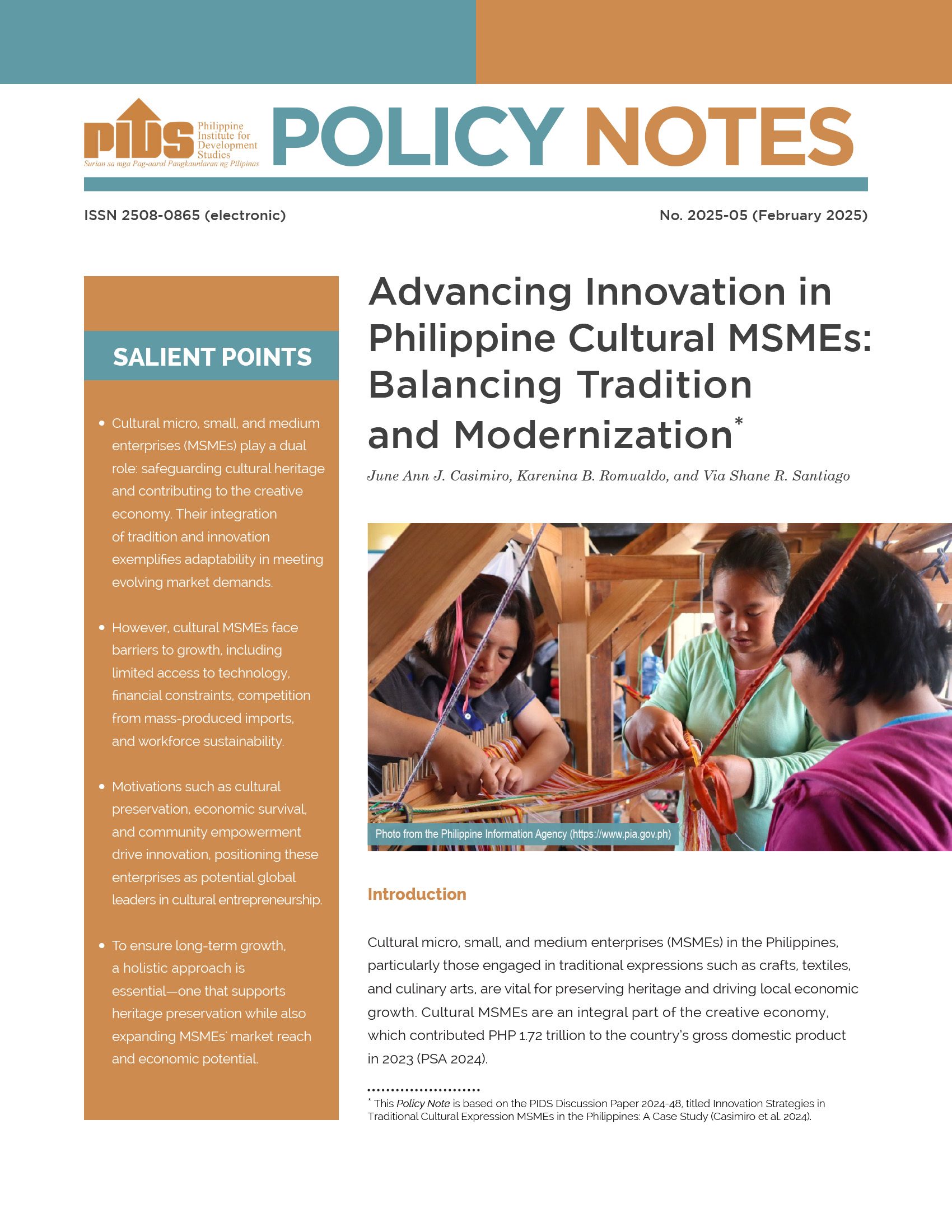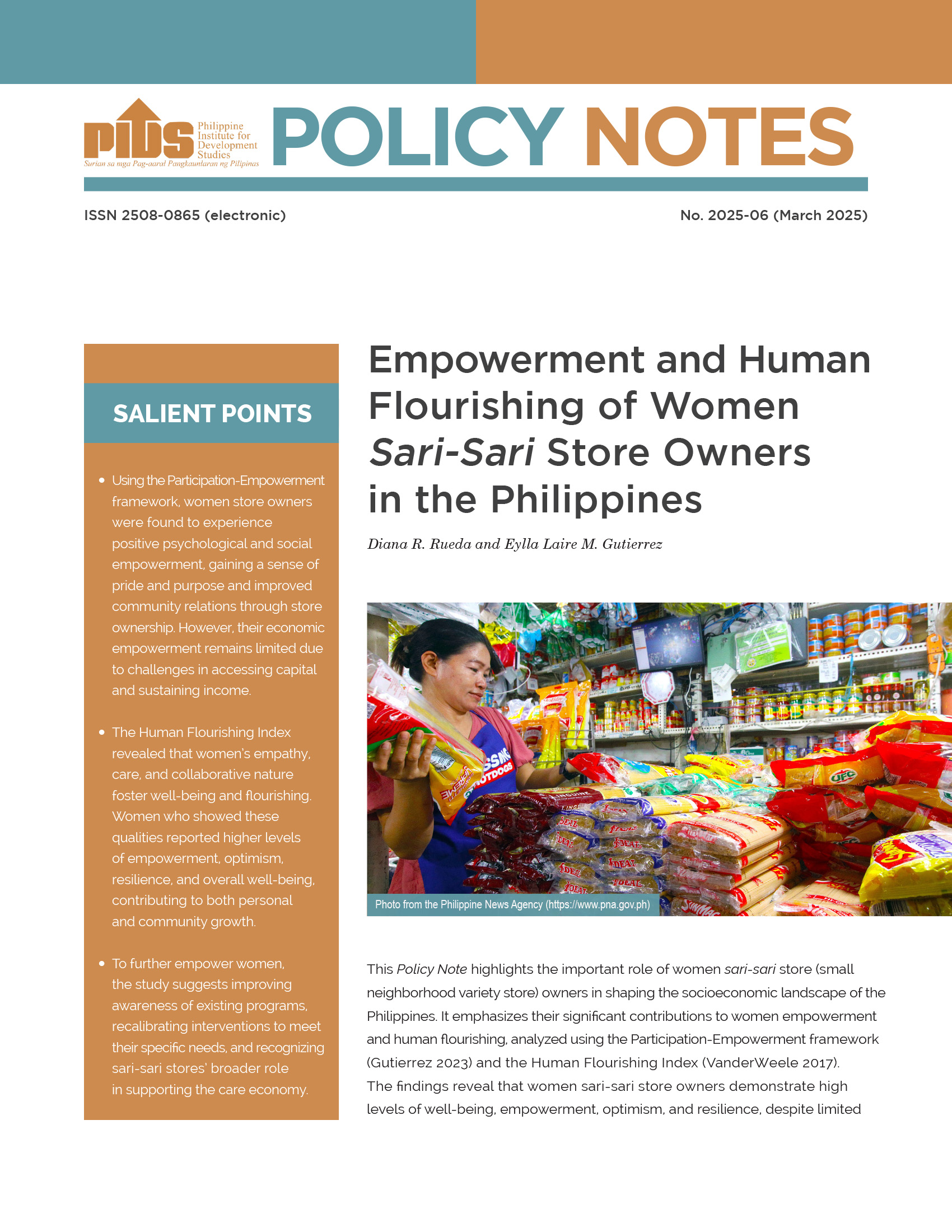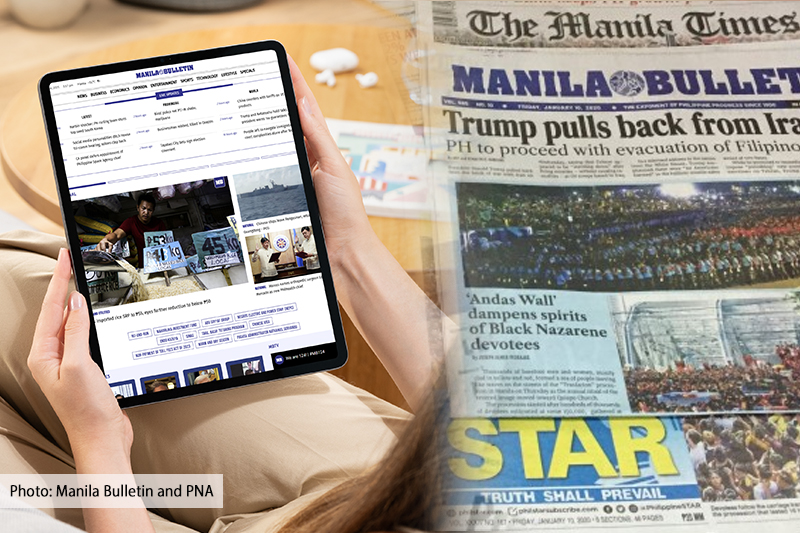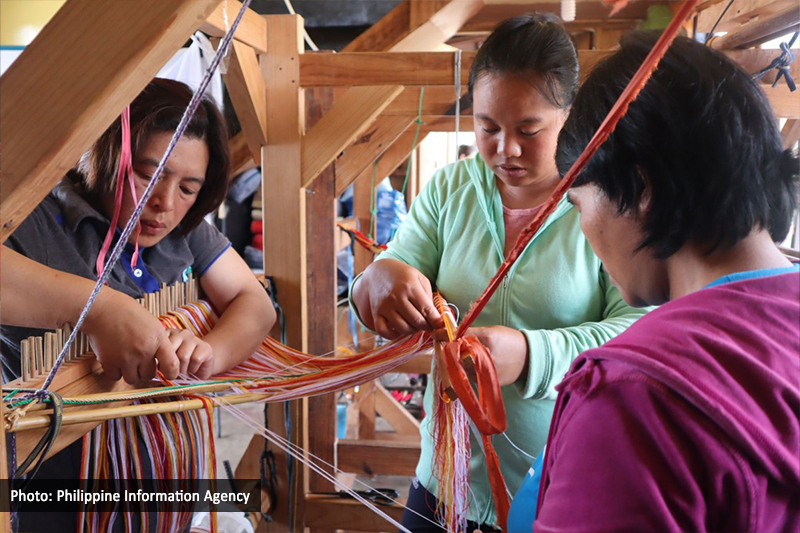Small businessmen could end up as the biggest winners in the ongoing regional meetings should the commitments and pledged funding support for the micro, small and medium enterprise (MSME) sector—including P75 billion in financing and capacity-building seed funds—are transformed into concrete programs, experts said.
Trade Secretary Ramon M. Lopez said President Duterte’s call for as much as P50 billion in support funding for MSMEs is a welcome policy pronouncement from the Chief Executive.
That should be about P40 billion to P50 billion for the next few years. Aside from about P25 billion for microfinancing, we need funding for MSME training, entrepreneurship education, mentoring, shared-services facilities, equipment, product development, suppliers facilitation, design assistance, market development, local and foreign market promotion, retail-store concepts, trade exhibits and building of more Negosyo Centers,” Lopez told the BusinessMirror.
During his keynote message closing the launch of the Asean Mentors for Entrepreneurship Network at the Asean Business and Investment Summit last Sunday, Duterte brought up increased funding for MSMEs, which constitute 99.6 percent of all businesses in the country.
The chief executive suggested an amount of P50 billion to MSMEs, which, the trade secretary, said should be spread out in the next few years
As the main agency tasked to promote business growth and creation, the Department of Trade and Industry (DTI) has already enacted several new programs, as well as continued programs carried over from the previous administration.
The Pondo Para sa Pagbabago at Asenso, for instance, is a P1-billion financing program initiated by Lopez intended to give MSMEs better access to finance, and to reduce their cost of borrowing. The fund gives priority to the country’s 30 poorest provinces,and intends to replace the “5-6” (20-percent interest) money-lending system.
The DTI has earmarked P5.1 billion in its budget proposal to the House of Representatives for general programs. MSME Development corners the second-biggest share of 27 percent—or some P 1.3 billion—of the total Programs budget.
MSMEs in global value chains
The Duterte administration also used the Asia Pacific and Asean meetings as platforms to promote MSMEs in global value chains (GVCs).
According to Foreign Assistant Secretary Leo Herrera-Lim, Duterte was able to persuade leaders of the Asia-Pacific Economic Cooperation (Apec) member-economies to provide the MSME sector the backing it needs to flourish in the international market. Lim said the President made sure the outcome declaration of Apec leaders will promote MSMEs in GVCs.
The leaders adopted a statement that endorses concerted action on advancing economic, financial and social inclusion, and to give priority reskilling and [human-resource development] to help MSMEs adopt to the fourth industrial revolution and the digital age. The same statement underscored the leaders’ support for MSMEs in GVCs,” Lim told the BusinessMirror.
Several initiatives in the Apec platform are oriented toward helping MSMEs innovation capacities, improving their access to digital infrastructure, assisting them in enhancing their digital capabilities and toward an establishment of a business ecosystem that supports start-ups,” Lim added.
Apec leaders have expressed in their declaration the need to implement policies that will allow MSMEs to “take full advantage of global value chains.
We encourage further actions to enable better participation, greater value added and upward mobility of developing economies and MSMEs in GVCs. We appreciate initiatives, such as Asia-Pacific Model E-port Network and Apec Green Supply Chain Network, and their positive contribution to supply-chain connectivity,” the leaders said.
As a resolve, Apec member-economies have vowed to bolster MSMEs innovation capacities that will facilitate access to finance, technology and capacity building, especially for women and youth-led businesses. They also pledged to “create an enabling environment for MSMEs, including by promoting business ethics.
We commit to…support start-ups through establishing an innovative start-up ecosystem, with conducive regulatory frameworks, that promote a business-friendly environment, ensuring access to resources and building start-up networks and partnership,” the leaders added. As a follow-up to his campaign in the Apec summit in Da Nang, Vietnam, Duterte also called on his fellow leaders in the Asean to espouse the same attitude toward MSMEs.
In a speech last Sunday, the President told small businessmen he is willing to allocate “maybe a few billions here and there” to the MSME sector. “Well, [I will really allot] capital because we found out in our meetings with Apec that the basic unit of the economy has always been moved by MSMEs,” Duterte said.
Next year, I would like to make some late changes in the [General Appropriations Act], the annual budget. I would like to pour more money on this medium, small and micro enterprise,” the President added.
Duterte said he understands the role and contribution of MSMEs to the Philippine economy—“the small guy down there that contributes a lot to what is really happening before our rise, and it’s improving the economy.
In 2015 the Philippine Statistics Authority reported 99.5 percent, or 896,839, of the 900,914 establishments in the country are MSMEs. While large businesses employed a total of 2.98 million workers, MSMEs were able to generate 4.78 million jobs.<
Experts weigh in
University of Asia and the Pacific (UA&P) School of Economics Dean Cid Terosa told the BusinessMirror that the amount pledged by the Duterte administration can be used as seed money for an “MSME bank”, similar to the overseas Filipino workers (OFW) bank placed under the Land Bank of the Philippines.
On top of the fund, Terosa said the DTI, University of the Philippines (UP) and other similar institutions must extend financial education and training to MSMEs.
The government should allocate at least P10 billion for this effort. The money should be used as initial capital for a bank solely dedicate for this purpose. DTI, UP and related institutions can be mobilized to set up education and training programs to complement funding support, assistance, or subsidies,” Terosa said.
Terosa added the bank can extend loans to MSMEs, as well as other financial programs, such as asset investments and management tailored to their needs. This will reduce MSMEs’ reliance on informal financing schemes.
The lack of funds usually sends MSMEs to the doorsteps of loan sharks who lend them funds at a high cost. In a 2016 working paper, the Asian Development Bank Institute (Adbi) said the interest can often reach 20 percent.
In the country the ADBI said this is known as “5-6 financing,” which means that for every $5 borrowed over a one week period, borrowers need to pay $6. The $1 interest is equivalent to an interest rate of 20 percent.
However, economists like former Labor Undersecretary Rene E. Ofreneo and Ateneo de Manila University School of Social Sciences Dean Fernando T. Aldaba said creating a bank is not needed, given the existence of the Land Bank of the Philippines (LBP) and Development Bank of the Philippines (DBP).
In a phone interview, Ofreneo said the DBP is supposed to help new industries and new enterprises, while the LBP was tasked to help agriculture entrepreneurs.
He said what the government should do, even before talking about finances, is to review and evaluate the funds and other efforts exerted to help MSMEs in the past.
One such program, Ofreneo said, is the SME Unified Lending Program for National Growth (Sulong) established under the term of former President Gloria Macapagal-Arroyo.
The program, based on the former president-turned-Pampanga representative’s website aims to “lower the effective cost of borrowing by SMEs and liberalize requirements, create a wider financing system that will give SMEs better access to short- and long-term funds and standardize lending procedures.
The government should review existing programs and harmonize them. The One Town One Product is a good program, as well as the planned One Barangay One Product, but there are no updates regarding these efforts,” Ofreneo said.
For his part, Trade Assistant Secretary Rafaelita M. Aldaba said credit policy is different for microenterprises and SMEs, because these businesses have different characteristics and, therefore, needs.
For one, based on a 2012 Philippine Institute for Development Studies (PIDS) study of Aldaba, the assets of microenterprises reach P3 million or less, while small businesses have assets worth P3 million to P15 million and medium, P15 million to P100 million.
Further, the PIDS study stated that micro enterprises have less than 10 employees; small enterprises, 10 to 99 employees; and medium, 100 to 199 workers. “My view here is that credit policy must be distinguished between micro and SME. They have very distinct needs. The latter also needs more funding, while the former even gets funding and credit from international donors. SMEs have greater job-generation potential than micro enterprises, too,” Mr. Aldaba said.
I also think microcredit is more related to poverty and social protection while SME credit is more for macroeconomic growth and job generation,” he added. Cai U. Ordinario, Elijah Felice E. Rosales and Catherine N. Pillas
Trade Secretary Ramon M. Lopez said President Duterte’s call for as much as P50 billion in support funding for MSMEs is a welcome policy pronouncement from the Chief Executive.
That should be about P40 billion to P50 billion for the next few years. Aside from about P25 billion for microfinancing, we need funding for MSME training, entrepreneurship education, mentoring, shared-services facilities, equipment, product development, suppliers facilitation, design assistance, market development, local and foreign market promotion, retail-store concepts, trade exhibits and building of more Negosyo Centers,” Lopez told the BusinessMirror.
During his keynote message closing the launch of the Asean Mentors for Entrepreneurship Network at the Asean Business and Investment Summit last Sunday, Duterte brought up increased funding for MSMEs, which constitute 99.6 percent of all businesses in the country.
The chief executive suggested an amount of P50 billion to MSMEs, which, the trade secretary, said should be spread out in the next few years
As the main agency tasked to promote business growth and creation, the Department of Trade and Industry (DTI) has already enacted several new programs, as well as continued programs carried over from the previous administration.
The Pondo Para sa Pagbabago at Asenso, for instance, is a P1-billion financing program initiated by Lopez intended to give MSMEs better access to finance, and to reduce their cost of borrowing. The fund gives priority to the country’s 30 poorest provinces,and intends to replace the “5-6” (20-percent interest) money-lending system.
The DTI has earmarked P5.1 billion in its budget proposal to the House of Representatives for general programs. MSME Development corners the second-biggest share of 27 percent—or some P 1.3 billion—of the total Programs budget.
MSMEs in global value chains
The Duterte administration also used the Asia Pacific and Asean meetings as platforms to promote MSMEs in global value chains (GVCs).
According to Foreign Assistant Secretary Leo Herrera-Lim, Duterte was able to persuade leaders of the Asia-Pacific Economic Cooperation (Apec) member-economies to provide the MSME sector the backing it needs to flourish in the international market. Lim said the President made sure the outcome declaration of Apec leaders will promote MSMEs in GVCs.
The leaders adopted a statement that endorses concerted action on advancing economic, financial and social inclusion, and to give priority reskilling and [human-resource development] to help MSMEs adopt to the fourth industrial revolution and the digital age. The same statement underscored the leaders’ support for MSMEs in GVCs,” Lim told the BusinessMirror.
Several initiatives in the Apec platform are oriented toward helping MSMEs innovation capacities, improving their access to digital infrastructure, assisting them in enhancing their digital capabilities and toward an establishment of a business ecosystem that supports start-ups,” Lim added.
Apec leaders have expressed in their declaration the need to implement policies that will allow MSMEs to “take full advantage of global value chains.
We encourage further actions to enable better participation, greater value added and upward mobility of developing economies and MSMEs in GVCs. We appreciate initiatives, such as Asia-Pacific Model E-port Network and Apec Green Supply Chain Network, and their positive contribution to supply-chain connectivity,” the leaders said.
As a resolve, Apec member-economies have vowed to bolster MSMEs innovation capacities that will facilitate access to finance, technology and capacity building, especially for women and youth-led businesses. They also pledged to “create an enabling environment for MSMEs, including by promoting business ethics.
We commit to…support start-ups through establishing an innovative start-up ecosystem, with conducive regulatory frameworks, that promote a business-friendly environment, ensuring access to resources and building start-up networks and partnership,” the leaders added. As a follow-up to his campaign in the Apec summit in Da Nang, Vietnam, Duterte also called on his fellow leaders in the Asean to espouse the same attitude toward MSMEs.
In a speech last Sunday, the President told small businessmen he is willing to allocate “maybe a few billions here and there” to the MSME sector. “Well, [I will really allot] capital because we found out in our meetings with Apec that the basic unit of the economy has always been moved by MSMEs,” Duterte said.
Next year, I would like to make some late changes in the [General Appropriations Act], the annual budget. I would like to pour more money on this medium, small and micro enterprise,” the President added.
Duterte said he understands the role and contribution of MSMEs to the Philippine economy—“the small guy down there that contributes a lot to what is really happening before our rise, and it’s improving the economy.
In 2015 the Philippine Statistics Authority reported 99.5 percent, or 896,839, of the 900,914 establishments in the country are MSMEs. While large businesses employed a total of 2.98 million workers, MSMEs were able to generate 4.78 million jobs.<
Experts weigh in
University of Asia and the Pacific (UA&P) School of Economics Dean Cid Terosa told the BusinessMirror that the amount pledged by the Duterte administration can be used as seed money for an “MSME bank”, similar to the overseas Filipino workers (OFW) bank placed under the Land Bank of the Philippines.
On top of the fund, Terosa said the DTI, University of the Philippines (UP) and other similar institutions must extend financial education and training to MSMEs.
The government should allocate at least P10 billion for this effort. The money should be used as initial capital for a bank solely dedicate for this purpose. DTI, UP and related institutions can be mobilized to set up education and training programs to complement funding support, assistance, or subsidies,” Terosa said.
Terosa added the bank can extend loans to MSMEs, as well as other financial programs, such as asset investments and management tailored to their needs. This will reduce MSMEs’ reliance on informal financing schemes.
The lack of funds usually sends MSMEs to the doorsteps of loan sharks who lend them funds at a high cost. In a 2016 working paper, the Asian Development Bank Institute (Adbi) said the interest can often reach 20 percent.
In the country the ADBI said this is known as “5-6 financing,” which means that for every $5 borrowed over a one week period, borrowers need to pay $6. The $1 interest is equivalent to an interest rate of 20 percent.
However, economists like former Labor Undersecretary Rene E. Ofreneo and Ateneo de Manila University School of Social Sciences Dean Fernando T. Aldaba said creating a bank is not needed, given the existence of the Land Bank of the Philippines (LBP) and Development Bank of the Philippines (DBP).
In a phone interview, Ofreneo said the DBP is supposed to help new industries and new enterprises, while the LBP was tasked to help agriculture entrepreneurs.
He said what the government should do, even before talking about finances, is to review and evaluate the funds and other efforts exerted to help MSMEs in the past.
One such program, Ofreneo said, is the SME Unified Lending Program for National Growth (Sulong) established under the term of former President Gloria Macapagal-Arroyo.
The program, based on the former president-turned-Pampanga representative’s website aims to “lower the effective cost of borrowing by SMEs and liberalize requirements, create a wider financing system that will give SMEs better access to short- and long-term funds and standardize lending procedures.
The government should review existing programs and harmonize them. The One Town One Product is a good program, as well as the planned One Barangay One Product, but there are no updates regarding these efforts,” Ofreneo said.
For his part, Trade Assistant Secretary Rafaelita M. Aldaba said credit policy is different for microenterprises and SMEs, because these businesses have different characteristics and, therefore, needs.
For one, based on a 2012 Philippine Institute for Development Studies (PIDS) study of Aldaba, the assets of microenterprises reach P3 million or less, while small businesses have assets worth P3 million to P15 million and medium, P15 million to P100 million.
Further, the PIDS study stated that micro enterprises have less than 10 employees; small enterprises, 10 to 99 employees; and medium, 100 to 199 workers. “My view here is that credit policy must be distinguished between micro and SME. They have very distinct needs. The latter also needs more funding, while the former even gets funding and credit from international donors. SMEs have greater job-generation potential than micro enterprises, too,” Mr. Aldaba said.
I also think microcredit is more related to poverty and social protection while SME credit is more for macroeconomic growth and job generation,” he added. Cai U. Ordinario, Elijah Felice E. Rosales and Catherine N. Pillas












